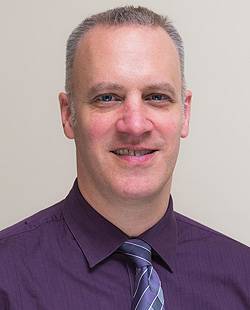New year, new you!
The beginning of a new year often can feel like a fresh start for us, too. We all of a sudden have this reset button and a burst of motivation to accomplish goals we’ve been thinking about for a while. Nothing can stop us!
Until…we do stop. While the start of a new year and other times in our lives can define a clear starting line and spark a strong desire for change, our motivation often—and quickly—fades.
About 60 percent of us make New Year’s resolutions, but only 8 percent are successful in achieving them. We tend to lose our resolve just six weeks later, in mid-February.
Achieving a New Year’s resolution, or any goal you may have throughout the year, is entirely possible. We just may have to change our approach. Here are four steps that I’ve found work well for myself and for my patients to turn resolutions to reality.
1. Establish a goal that is—and will continue to be—important to you
One of the downfalls of resolutions is that they tend to be both lofty and vague. For example, “get more exercise” is one that over one-third of people tend to plan. Perhaps a healthier lifestyle is important to you, but you may need to do some additional work to understand why it’s important to you..
To do so, it can be helpful to think through (and write out) the pros and cons of staying the same versus making a change. For example, increasing exercise would make us feel better about ourselves, give us more energy, improve our health in many ways, and possibly lose weight. However, it also takes energy, may be uncomfortable at least initially, and may require a change in daily routine. The pros of NOT increasing exercise are that it would be easier and would take less effort. The cons are that we would stay feeling bad about ourselves and feel unhealthy. Writing it out makes it more concrete and allows us to think through more clearly.
2. Break down long-term goals
One of the reasons our motivation plummets following setting a long-term goal is that we can’t see results right away. We can avoid this by breaking down our long-term goal into separate, short-term goals that can be accomplished within a week. For example, using the “exercise more” goal above, we may set a series of short-term goals that could include exercising 20 minutes a day for five days this week.
The most important thing here is to start small. Make sure your short-term goal is feasible, and that you feel confident. After seeing success, you can increase the goal the following week and steadily make progress toward your long-term goal.
3. Create action plans
It may sound tedious, but taking a little time to create specific, detailed action plans can greatly help you accomplish the goals you set for yourself. For example, if you want to exercise 20 minutes a day for five days this week, how will you go about doing that?
Consider outlining what you will do (a 10-minute jog around the neighborhood followed by 10 minutes of lifting free weights), when you will do it (6:30 a.m. on weekdays), and with whom (your next-door neighbor). Anticipate obstacles and develop a plan B. For example, what will you do when the weather is poor, or your neighbor bails? Think of these things now, so they won’t become excuses later.
4. Remind yourself of what you’re capable of
It’s important to promote your sense of mastery, self-efficacy, and confidence in yourself. Break cycles of inactivity and avoidance by regularly checking in on your mental health (assessments like the ones in Sanvello are a great place to start).
Evaluate successes and difficulties each week. Give yourself well-deserved credit for the successes, and don’t beat yourself up about the difficulties: Just make a plan for the next week for how you will adjust. Maybe that’s scaling back the plan a bit until you see more success, or asking a friend to help hold you accountable.
By being ready to change and using these tools and tips to implement change, you’re equipped to achieve whatever you put your mind to this year.
So, what will your New Year’s resolution(s) be for 2020?

By Dr. Patrick Raue
Clinical Psychologist and Sanvello Clinical Advisory Board Member
Patrick J. Raue, PhD is Professor in the Department of Psychiatry and Behavioral Sciences at the University of Washington. He received his PhD in Clinical Psychology from SUNY Stony Brook in 1995.
Dr. Raue is Associate Director for Evidence-Based Psychosocial Interventions at the AIMS Center, and Director of the National Network of Problem Solving Therapy Clinicians, Trainers & Researchers. In these roles, he develops and leads implementation and training programs in a variety of behavioral health interventions.

